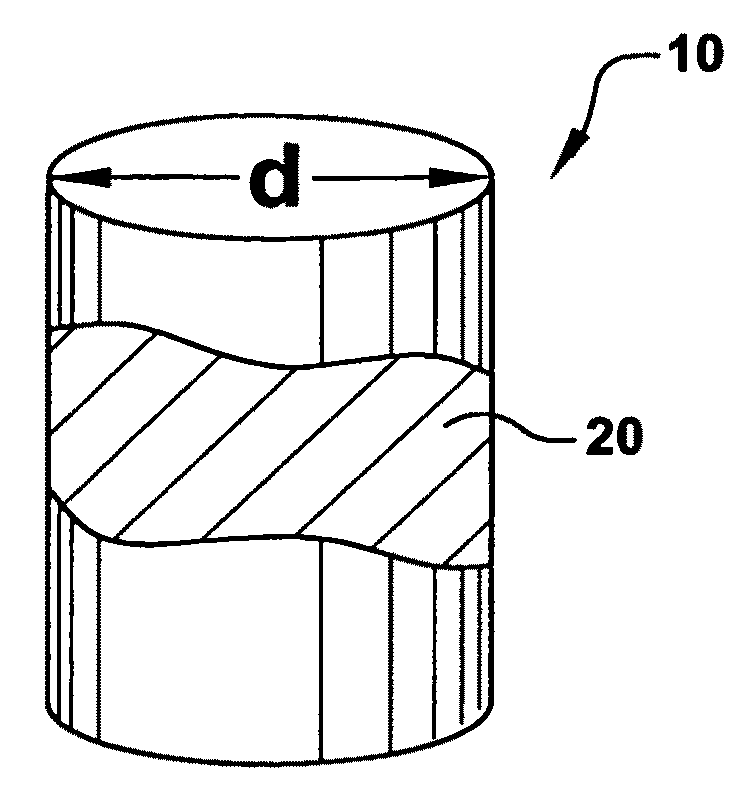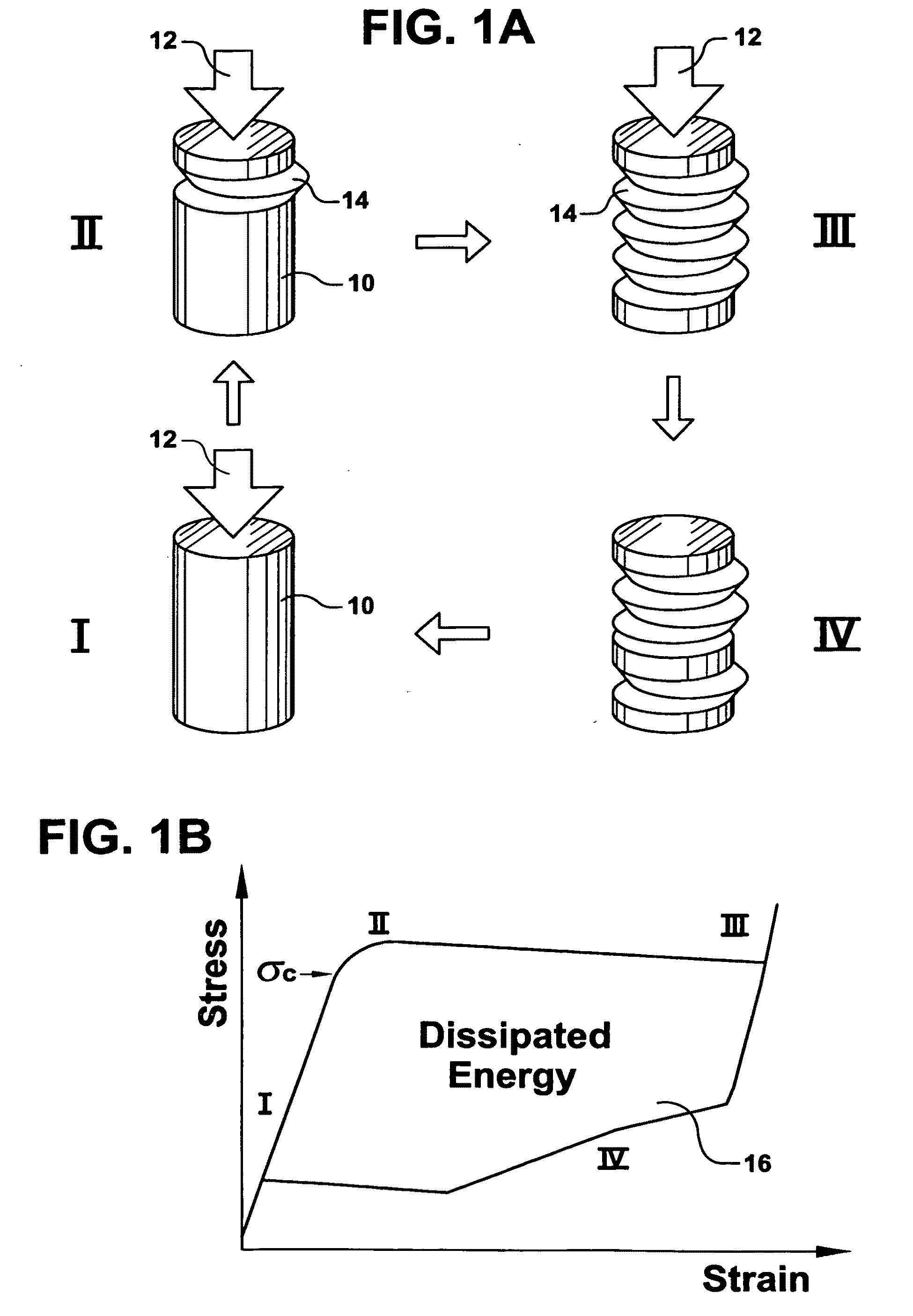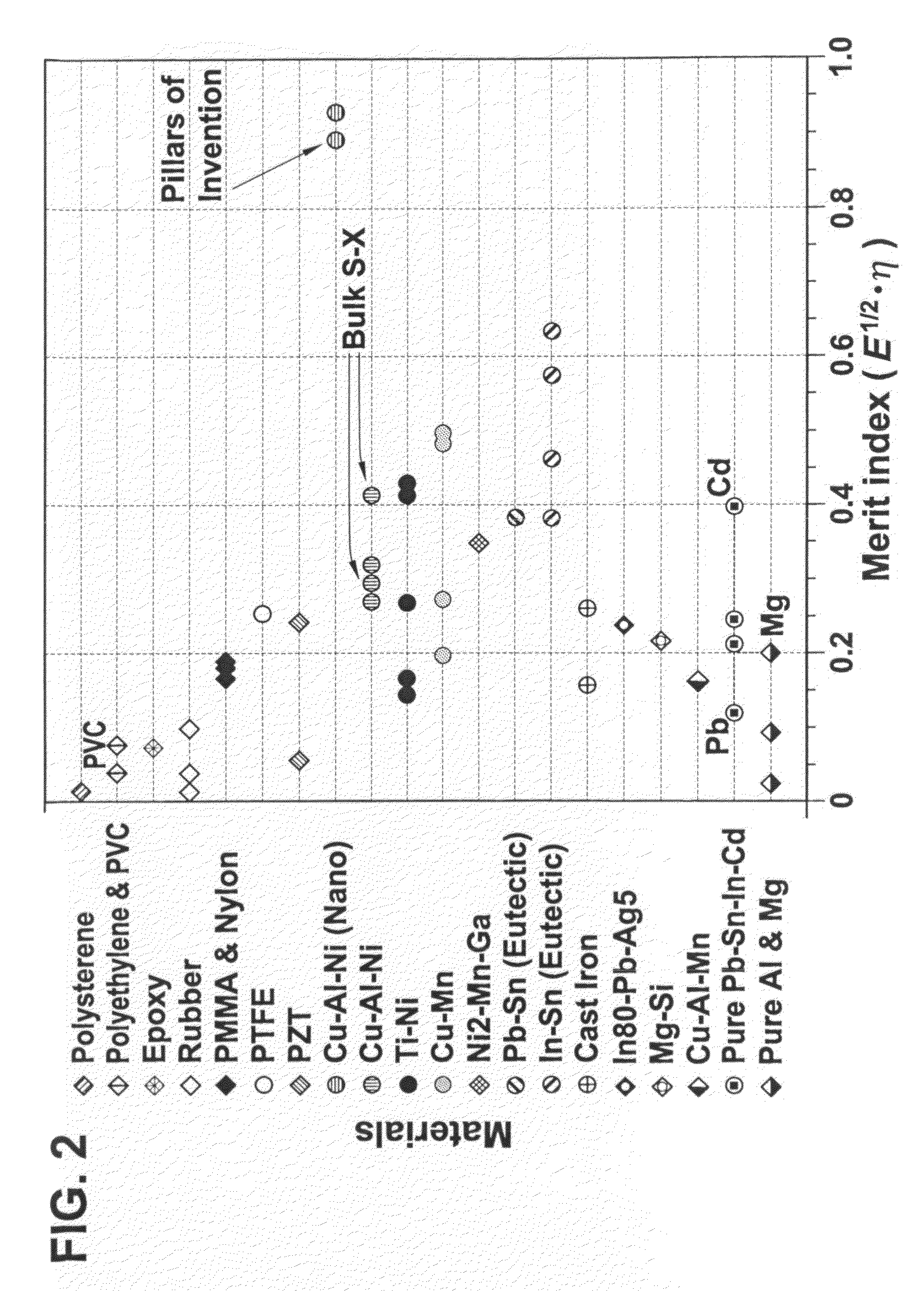Superelastic Alloy Structural Geometry for Ultrahigh Mechanical Damping
a technology of structural geometry and alloys, applied in the direction of woven fabrics, textiles and paper, braids, etc., can solve the problems of ineffective or even applicable conventional macro-scale damping structures, many complicated mechanical systems can malfunction or be damaged, and many complicated mechanical systems can be damaged. , to achieve the effect of more precise and reliabl
- Summary
- Abstract
- Description
- Claims
- Application Information
AI Technical Summary
Benefits of technology
Problems solved by technology
Method used
Image
Examples
example i
[0076]A superelastic alloy composition of Cu 81.3 wt %-Al 13.7 wt %-Ni 5 wt %, having a melting temperature of about 1100° C., was produced in melt form and drawn into superelastic alloy fibers of varying diameters. The fibers were produced by Taylor wire hot drawing through a glass tube of Borosilicate Pyrex glass of 80.6 wt % SiO2, 12.6 wt % B2O3, 4.2 wt % Na2O, and 2.2 wt % Al2O3, having a softening temperature of about 820° C., a working temperature of about 1200° C. and an inner diameter of about 4 mm. The fibers were drawn at a temperature above the melting point in a low vacuum. Thirteen different fiber diameters were achieved ranging from about 450 microns in diameter to about 20 microns in diameter, with draw speeds ranging between about 1-4 m / s. Once drawn, the fibers were annealed at a temperature of about 850° C. in an argon atmosphere for about one hour and then quenched in cold water to impart a bamboo microstructure to the fibers. Afterwards, the glass coating on the ...
example ii
[0082]oriented single crystals of the Cu—Al—Ni alloy Cu-13.7Al-5Ni (wt %) were characterized. This alloy exhibits transformation temperatures of Ms=291 K, Mf=273 K, As=285 K and Af=303 K, corresponding to the temperatures of the martensitic phase start and finish and the austenitic phase start and finish, respectively. This alloy is in the austenitic phase (cubic) at room temperature and consequently is susceptible to stress-induced transformation to β′ martensite (monoclinic).
[0083]Micro- and nano-scale pillars of the alloy were produced by focused ion beam (FIB) micromachining with a FEI Dual Beam DB235 instrument. Each pillar was machined from the surface of sections cut from bulk Cu—Al—Ni single crystals. Micro-compression tests were then performed on the pillars by instrumented nano-indentation with a Hysitron Triboindenter and using a sphero-conical diamond indenter tip of 0.6 μm in radius. One example experimental micro-pillar exhibited a slightly tapered shape with a diamete...
PUM
| Property | Measurement | Unit |
|---|---|---|
| grain size | aaaaa | aaaaa |
| diameter | aaaaa | aaaaa |
| diameter | aaaaa | aaaaa |
Abstract
Description
Claims
Application Information
 Login to View More
Login to View More - R&D
- Intellectual Property
- Life Sciences
- Materials
- Tech Scout
- Unparalleled Data Quality
- Higher Quality Content
- 60% Fewer Hallucinations
Browse by: Latest US Patents, China's latest patents, Technical Efficacy Thesaurus, Application Domain, Technology Topic, Popular Technical Reports.
© 2025 PatSnap. All rights reserved.Legal|Privacy policy|Modern Slavery Act Transparency Statement|Sitemap|About US| Contact US: help@patsnap.com



